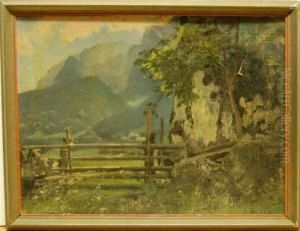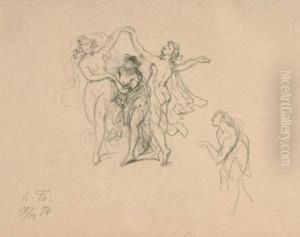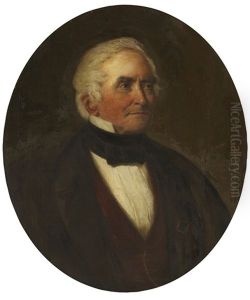Ludwig Thiersch Paintings
Ludwig Thiersch was a notable German painter, part of the 19th-century artistic movement, primarily recognized for his contributions to religious and historical painting. Born on May 12, 1825, in Munich, Bavaria, Thiersch was deeply ingrained in the artistic culture of the time, influenced by the rich heritage of German art and the burgeoning romantic movement.
His education in art began under the guidance of his father, Heinrich Thiersch, a respected architect, which laid a foundational understanding of classical forms and structures. Ludwig furthered his studies at the Academy of Fine Arts Munich, a prestigious institution that shaped many artists of his generation. During his time at the academy, he was influenced by the Nazarenes, a group of Romantic painters who sought to revive honesty and spirituality in Christian art. This influence is evident in Thiersch's adherence to religious themes and his dedication to incorporating realism and emotion into his works.
Throughout the mid to late 19th century, Thiersch gained recognition for his large-scale religious paintings, which were commissioned for various churches across Germany and other countries. Notable among these are his works for the St. Boniface's Abbey in Munich and the Orthodox Church of Christ the Savior in Moscow. His style, characterized by vivid detail, dramatic lighting, and emotional depth, resonated with the sentiments of the time, capturing the spiritual and historical consciousness of his audience.
In addition to religious paintings, Thiersch also explored historical and mythological themes, showcasing his versatility as an artist. His ability to blend classical techniques with the emotional intensity of the Romantic movement earned him accolades and respect among his contemporaries.
Despite the changing tides of artistic preference towards the end of the 19th century, with the rise of Impressionism and Post-Impressionism, Thiersch remained committed to his classical roots, continuing to produce works that reflected his deep engagement with historical and religious subjects.
Ludwig Thiersch's legacy is marked by his contribution to the revival of religious art in the 19th century, his mastery in portraying historical and biblical narratives, and his influence on the generation of artists that followed. He passed away on May 10, 1909, in Munich, leaving behind a body of work that continues to be appreciated for its depth, craftsmanship, and emotional resonance.





























